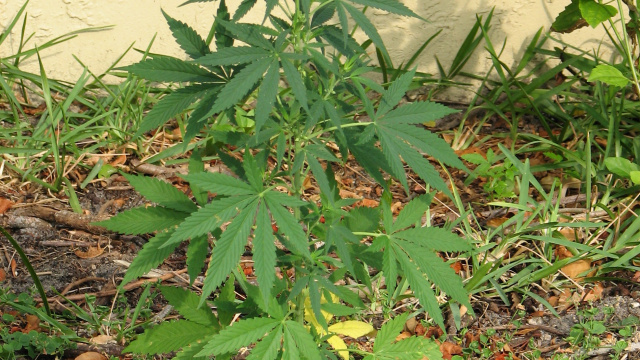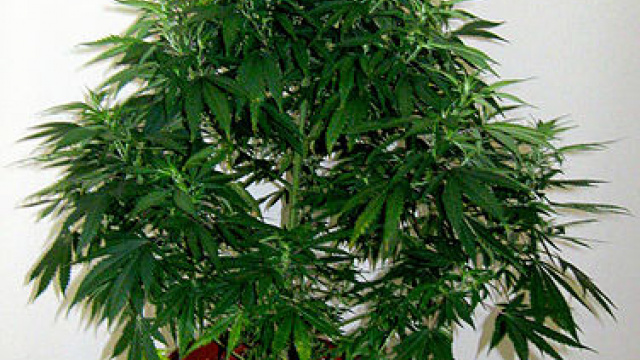Technological advancements have given today’s teenagers access to a lot of things their parents could hardly envision at that age: The Internet. iPads. And marijuana many times more powerful than what people smoked in the 1970s.
The rise in marijuana use among teens, as documented by recent national surveys, comes as particularly alarming to health advocates because marijuana is more potent than ever before, experts say. That means the pot youth are smoking today carries a greater risk of harm than what their parents might have experienced a generation ago.
“The people who are growing marijuana have improved their techniques,” Stephen Pasierb, president and CEO of the Partnership at Drugfree.org, said in phone interview. “Nobody’s cleaning seeds out of marijuana on a record album like they used to do in the old days.”
Counter-drug investigators say the trend is increasingly evident in North Carolina too, as clandestine domestic producers perfect their techniques and harness science to genetically engineer their yields.
Growing marijuana indoors, a common practice among domestic cultivators, allows producers to manipulate temperatures, carbon dioxide levels and other environmental elements. That degree of control, coupled with the selective breeding of more powerful cannabis strains, enables the production of highly potent plants.
“They cross strains like they’re breeding dogs,” said Special Agent Gregory Peckinpaugh, domestic cannabis eradication suppression coordinator for the Drug Enforcement Agency’s Atlanta field division, which covers North Carolina. As a result, he said, “the quality of marijuana both indoors and out domestically has gone up exponentially.”
Marijuana potency, determined by the amount of the active chemical delta-9-tetrahydrocannabinol, or THC, measured in a given sample, has been on a steady climb over the last three decades.
In 1976, an analysis of DEA seizures found an average THC content of between a half and 1 percent. In 2011, that figure was nearing 12 percent, with some samples containing THC levels above 20 and 30 percent, said Mahmoud ElSohly, director of the University of Mississippi’s Potency Monitoring Project, which conducted the analyses.
Because long-term marijuana users develop tolerance for the drug, ElSohly said the stakes were higher for young people whose bodies are unaccustomed to high-grade marijuana’s powerful effects.
“They end up with psychosis, psychological problems, panic disorder, things of that nature, because their body is not used to that material,” ElSohly said.
The prevalence of potent marijuana has led to concerns among health advocates because the number of teens using the drug has increased in recent years. A survey released in May by the Partnership at Drugfree.org and MetLife Foundation found that one in 10 teens had smoked marijuana at least 20 times in the previous month, an 80 percent increase over 2008.
Marijuana production is big business, a fact authorities ascribe to high profit margins, easy access to equipment and information and lower penalties in comparison to getting caught trafficking drugs like heroin or cocaine. High quality marijuana can sell for between $4,000 and $6,000 per pound, compared to about $1,000 or less for the weak varieties imported from Mexico, authorities said.
The bigger domestic grow operations are elaborate setups, complete with timers, fans, rows of lights and ventilation systems designed to hide the tell-tale aroma from neighbors. The attention to detail, as well as the dedication that some growers show, tending to their plants seven days a week like a religion, can marvel authorities.
The science behind the practice has produced a shadowy subculture of rogue horticulturists concerned about whether product quality will affect their reputation.
Sgt. Will Richards, an investigator with the Wilmington Police Department’s Narcotics Enforcement Unit, said the city has seen operations where producers stagger their growing schedules so they yield a harvest every few weeks, and thus a steady stream of income. “It’s extremely intricate,” Richards said.
Seasoned investigators have learned to distinguish at a glance enhanced marijuana from what they refer to as “brick weed,” so called because traffickers compress it to sneak as much as possible across the border.
In addition to more marijuana cultivators setting up shop in North Carolina, the softening of laws in other states has led to greater supply for all, authorities say.
California, where quasi-legal grow houses have sprung up in recent years, has become a leading source of marijuana for markets in Southeastern North Carolina. Authorities in Arizona recently intercepted a vehicle leaving California carrying 20 pounds of high-grade product destined for Wilmington, police said.
Some believe Mexican President Felipe Calderon’s grinding war against the cartels there has boosted prices for drugs shipped transnationally, giving homegrown marijuana producers a chance to capture more market share even though the price of their product runs higher than their Mexican counterparts.
Lt. J.A. LeBlanc, an investigator with the New Hanover County Sheriff’s Office’s Vice and Narcotics Unit, said users have become choosey with the quality of marijuana they consume, refusing to even buy the drug unless it meets a high standard.
“Now, you have an entire generation who reads “‘High Times’ and considers themselves marijuana connoisseurs,” he said, referencing a niche publication geared toward users and growers.
Source: Star-News (Wilmington, NC)
Copyright: 2012 Wilmington Morning Star
Contact: http://www.starnewsonline.com/section/submit01
Website: http://www.starnewsonline.com/
Author: Brian Freskos



Leave a Reply